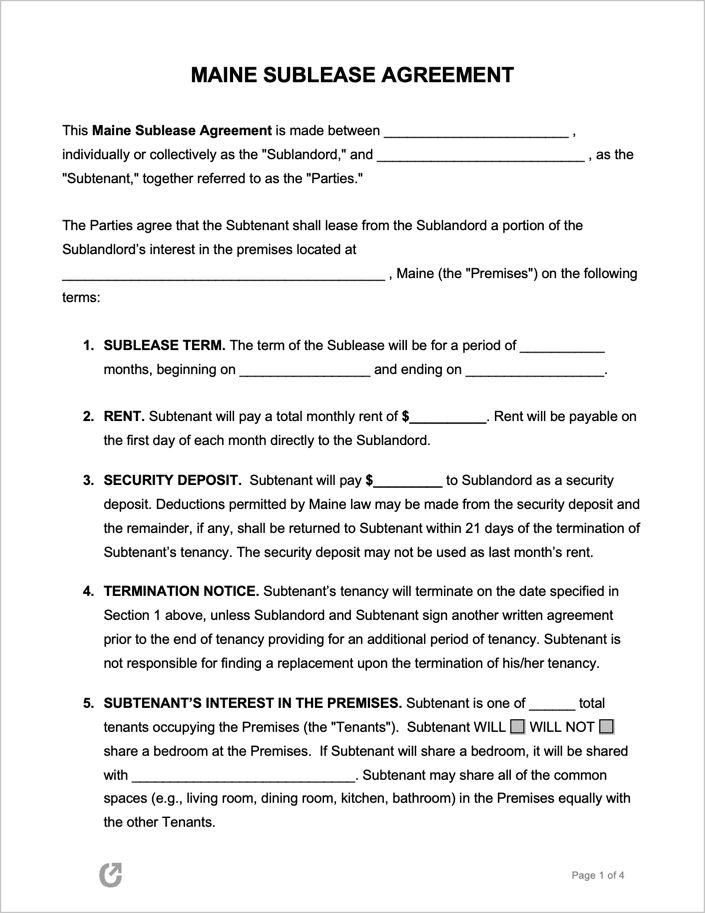Maine Sublease Agreement
The Maine Sublease Agreement establishes a legal relationship between an original tenant bound by a lease and a new tenant who will reside in the home or apartment in place of or alongside the original tenant. The original tenant is referred to as the “sublessor,” while the incoming tenant is called the “sublessee.” It’s crucial for tenants entering this type of contract to understand their ongoing obligations to the landlord, as stated in the original lease agreement. If the sublessee fails to make rental payments, the sublessor is still required to make timely payments to the landlord.
Maine law does not specifically address subleasing, so tenants should review their original contract for any relevant provisions. If subleasing is not mentioned, it can be assumed that it’s allowed. However, it’s best to contact the landlord and request permission to avoid potential conflicts. Sublessors should also consider requiring sublessees, particularly those unknown to them, to complete a rental application to ensure they have the financial means and a positive rental history.
Subleasing offers benefits such as flexibility and reduced financial burden but also involves additional responsibilities for the sublessor. Clear communication and thorough vetting of potential sublessees can help ensure a successful subleasing experience in Maine.
